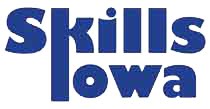In Assessment Center, adding a second teacher is pretty simple. You go to Class Details and add a new teacher just the same way you add a new student to the class. This teacher will have full access to the class, and can make assignments, create assessments, add students, delete students, and of course delete results. In short, anything that a lead teacher can do, this teacher can do too. Adding a new teacher to a class is not something that you should do without giving it some thought. Be sure that you and the person you are sharing the class with will be able to work together with good communication. It's a great way to have someone share the load with you, and it's a great way to cooperate with a teacher who has equal responsibility for the class.
In Skills Tutor, the same procedure is not possible. Only one teacher can have ownership of a class. This doesn't mean that a second teacher can't monitor the progress of a student however. In Skills Tutor, the data stays with a student, not with a class. This means that a teacher who shares responsibility can create a class with the same population and can monitor a student's progress by using the Student Detail report. This report will show the results of any student work done in subject areas that are selected for the report.
It's not the same as sharing the class, but it does provide data. If two teachers really need to share a Skills Tutor class, they will have to share a username and password.
Remember, these are two separate programs owned by two companies. They are brought together under the umbrella of Skills Iowa. Sometimes, the differences in the company procedures can cause confusion. What we have to remember is that both of these are great programs with different procedures that can help our students increase achievement.
